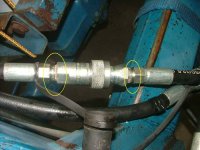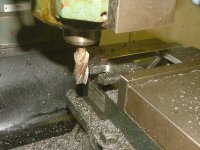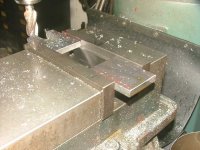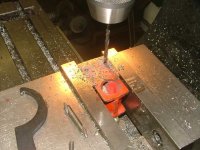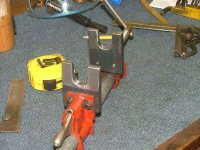kcprecision
Bronze Member
I don't post too much here but thought maybe you guys might be interested in this tool I made for my tractor hydraulics.
The other day I was trying to connect the hydraulic couplings on the tractor and I just did not have enough strength in my wrist to completely push the connector to gather.
Some where I saw a picture of a pair of pliers that had a fork on the end of the pliers. You slipped the fork over the pipe and squeezed them together and and that forced the coupling together.
While I was trying to get the coupler together I was thinking about something that I could use to make a tool to accomplish the same thing.
This is what I came up with.
The first Pic. is the hydraulic coupling. You slide the knurled part back and shove the other piece in. That is what I could not accomplish. So I thought about a fork that would slide down into the grove in the yellow circles.
Pic 2 and 3 is machining the fork. I made several pases to get the fork cut.
Pic 4 drilling the bolt holes in the pipe clamp pads.
Pic 5 The tool is complete. You start the coupling together put the forks down in the groves and gently close the pipe clamp shoving the coupling together.
The other day I was trying to connect the hydraulic couplings on the tractor and I just did not have enough strength in my wrist to completely push the connector to gather.
Some where I saw a picture of a pair of pliers that had a fork on the end of the pliers. You slipped the fork over the pipe and squeezed them together and and that forced the coupling together.
While I was trying to get the coupler together I was thinking about something that I could use to make a tool to accomplish the same thing.
This is what I came up with.
The first Pic. is the hydraulic coupling. You slide the knurled part back and shove the other piece in. That is what I could not accomplish. So I thought about a fork that would slide down into the grove in the yellow circles.
Pic 2 and 3 is machining the fork. I made several pases to get the fork cut.
Pic 4 drilling the bolt holes in the pipe clamp pads.
Pic 5 The tool is complete. You start the coupling together put the forks down in the groves and gently close the pipe clamp shoving the coupling together.
